——
——
 60. The Microphones
60. The Microphones
Mount Eerie
[K; 2003]
by Gabe Vodicka
Phil Elverum’s meticulous production has always exhibited a startling duplicity — it is somehow lean and intimate without sacrificing any amount of huge, throttling bombast. It’s the sort of effortless, organic sound attempted by countless bedroom recording projects; rarely does the finished product turn out so well. On Mount Eerie, a damned ambitious record if ever there was one, our humble narrator found himself staring death in the eye, talking to some version of God, and coming face to face with the Universe itself. It was the kind of far-reaching Great Artistic Statement that could very well have been an unlistenable drag in the hands of a lesser craftsman, but Elverum’s aforementioned production carried the album and turned it into something hauntingly epic. No big question was left unexplored, though inevitably, little was explained, and all the soul-searching built to an accepting finale: “Oh Universe/ I see your face looks just like mine,” Elverum concluded somewhat languidly. Elverum challenged us with this record, but moreover he gave us something truly special. Equal parts heart-achingly tender and bone-chillingly terrifying, Mount Eerie proved a creative high point in a still-blossoming career.
• P.W. Elverum & Sun: http://www.pwelverumandsun.com
• K: http://www.krecs.com
——
——
 59. of Montreal
59. of Montreal
Hissing Fauna, Are You The Destroyer?
[Polyvinyl; 2007]
by Jeff Milo
An opera of mental illness, Hissing Fauna, Are You The Destroyer? has proven, nearly three years on, to be resolutely captivating. Its dark, danceable, sexy psychedelia was beautiful; its flushing, winding synths and sequenced drums were forceful; and the relentlessly pounding beats treaded over not just a broken heart, but a splintering mind, providing a disarming, penitent shade to the day-glo dance tromps exuded at live shows by the hoards of new fans drawn in by disco-y whirls like “Heimdalsgate Like A Promethean Curse” and satirical flare-ups like “Suffer For Fashion.” Its palette was doused in deliciousness, from weirdo new-wave synth-gurgling (“Cato as a Pun”) to strutting R&B bass grooves (“Faberge Falls for Shuggie”), to a shifting of styles and melodies, refracting the errant narrative and the oncoming “dark mutation” (“Labrynthian Pomp”). And, of course, there was the infamous 12-minute trounce, “The Past is a Grotesque Animal,” unflinching in catharsis and self-depracation, unceasing in its pounding danceability, and still a fascinating composition of dark dance pop (which excavated singer/composer Kevin Barnes’ alter-ego Georgie Fruit, with whom he fatefully holds a continuous exchange-and-embrace for all of side two and for subsequent album Skeletal Lamping). From track two onward, it was a delineation of one’s past/present naivety and one’s present/future fatalistic self-destructiveness. Rarely does a band make such an over-the-edge album and still retain such hardcore fans.
• of Montreal: http://www.ofmontreal.net
• Polyvinyl: http://www.polyvinylrecords.com
——
——
 58. Wolf Eyes
58. Wolf Eyes
Dread
[Bulb; 2002]
by Papaya
Dread is often considered the “first” Wolf Eyes release, though there were a dozen or so CD-Rs and tapes released prior to it. At the very least, it was the first widely distributed Wolf Eyes album of the classic Olson-Young-Dilloway lineup and remains one of the best. The album showcased a group at the perfect cross-section of experimentation, confidence, and guts, which nowadays are too often mutually exclusive. Whirrs, blips, and broken beats fell like shrapnel from all directions, creating a chopped-and-screwed symphony that excelled in the daunting task of making thirty-six minutes feel like five. It is a noise album, for lack of a better term, but it never reverted to the crutches of overpowering feedback wash or red-level zoning — in fact, the diversity of sounds on the album was one of its greatest strengths, keeping things fresh throughout the album’s four tracks. Elements of noise, dub, drone, hardcore, and industrial music combined to make Dread a modern classic that has the distinction of being at the tip-top of the 1000+ releases in the American Tapes/Hanson/Wolf Eyes axis.
• Wolf Eyes: http://www.wolfeyes.net
• Sub Pop: http://www.subpop.com
——
——
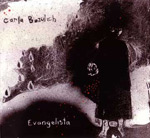 57. Carla Bozulich
57. Carla Bozulich
Evangelista
[Constellation; 2006]
by Split Foster
In a decade that saw the revival of innumerable careers, Carla Bozulich stood out as an artist who hit a new peak having never disappeared. She was all piss and punk and vinegar through the 80s and 90s before turning country with a Willie Nelson covers album in 2002. Four years later, on Evangelista, Bozulich wedded the country balladeer’s tuneful gravitas with the corrosive license of a post-punk noise maven. And what a wretched, beautiful marriage it was: as if Loretta Lynn and Scott Walker exchanged not only vows, but souls. Then underwent some kind of spiritual surgery — sans anesthetic — to switch back. The record of their screaming, their swooning, and the grind of the machines that pry those souls loose and wedge them back between ribs? That’s Evangelista. Incidentally, Lynn and Walker were two of the stars who returned to the studio in the 00s after lengthy hiatuses. In channeling their personae, Evangelista proved that genius doesn’t have to go on sabbatical to be reignited. Sometimes it turns the other cheek, roadshow after roadshow, fried amp after fried amp, until it bellows something fierce and spits its teeth in your face.
• Carla Bozulich: http://www.carlabozulich.com
• Constellation: http://cstrecords.com
——
——
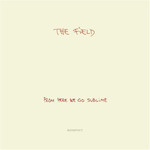 56. The Field
56. The Field
From Here We Go Sublime
[Kompakt; 2007]
by Larry Fitzmaurice
It’s quite possible that there’s been no album in this past decade as accurately titled as The Field’s breathtaking 2007 debut full-length, From Here We Go Sublime. By taking cues from minimalism’s structure, the warm insistence of house music, and the rolling fog of naturalistic sound perfected by Kompakt founder Wolfgang Voigt’s seminal, inimitable Gas project, sole Swede Axel Willner rendered truly original sonic movement within Sublime’s walls. Comparisons at the time of release were made to Boards of Canada’s Music Has the Rights to Children as a zeitgeisty moment of widespread accessibility, but making an overture to the number of people who “get” the repetitious, endlessly blessed-out locked grooves of Sublime dangerously overlooks how personal it sounded. This was music to get lost on the dancefloor with — the strobed melodies of “Everyday” and the perpetual heartbreak-throb of “Silent” were made for staring into club lights and finding a way to leave your mind — but emphasizing its sublime tendencies ignores Willner’s sly sense of humor unfolded within the Lionel Richie-sampling “A Paw In My Face” and the break-beaten “The Little Heart Beats So Fast.” Try to laugh, though, at the mind-melding reveal of the album closer and title track — or, stop thinking so damn much and submit to infinity.
• The Field: http://www.myspace.com/thefieldsthlm
• Kompakt: http://www.kompakt.fm
——
——
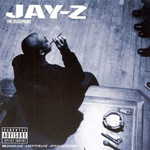 55. Jay-Z
55. Jay-Z
The Blueprint
[Roc-A-Fella/Island Def Jam; 2001]
by Embling
The Blueprint has gained in reputation, no doubt in part to the historicity of its release date. Hearing it now, the sense of specificity is jarring; few albums are as steeped in the sound of a time and place that are irretrievably lost, buried under bulldozed heaps of rubble and erased by progress’ indiscriminate revisions. Nostalgia blurs our perspectives, makes us yearn for that which cannot ever be recovered. It’s hard to remember the context of all the subliminal insults; these curious details lend the record a quaint air. Once the “Takeover” was complete, it was on to the next one. The cost of imperialism is cultural irrelevance; we recall that Jay beat Ether, and also that he then proceeded to recede into it. Victory, not age, precipitated Jay’s decline. Jay is now content to “reminisce [and] talk some shit,” as if such modest aims were what raised him to his station. Contentment is unbecoming of a warrior-king; Beowulf fell in battle, but this self-proclaimed ruler has chosen the soft death of sentiment over that of the sword. How thrilling it would be to see him descend, one last time, into the fray. But those old battlefields have been paved over unceremoniously. The title is a misnomer; the past can never be reconstructed. But for an hour, The Blueprint allowed us to bask in thought of lost possibility, to dream of the world that had for moments floated, before it came crashing, with utmost gravity, into our cultural landscape.
• Jay-Z: http://www.jay-z.com
• Roc-A-Fella: http://www.rocafella.com
• Island Def Jam: http://www.islanddefjam.com
——
——
 54. Fenn O’Berg
54. Fenn O’Berg
The Return of Fenn O’Berg
[Mego; 2002]
by Stephen Bezan
On their debut album, 1999’s The Magic Sounds of Fenn O’Berg, the trio of Christian Fennesz, Jim O’Rourke, and Peter Rehberg still seemed to be exploring the sonic territory made possible by the laptop’s live sound-processing capabilities. By the time the trio released The Return of Fenn O’Berg, however, it was clear that they had fully embraced and refined their form while maintaining an adventurous spirit in the process. Arranged from a series of live improvisations, The Return of Fenn O’Berg portrayed the trio’s breadth of aural material while never succumbing to academic sterility or fragmented cacophony. Throughout the work, digital feedback and electronic glitches seamlessly coexisted with orchestral flourishes and ambient soundscapes, thus creating atmospheres ranging from the spectral to the simply beautiful. While the music was fundamentally electronic in nature, there was still an undeniable organic quality to it, as if it was arranged from the recordings of impulses flowing from neuron to neuron. Most significantly, however, The Return of Fenn O’Berg stood in the face of those who questioned the laptop’s legitimacy as a tool in live improvisation, as it showcased each artist’s idiosyncrasies in a manner that was at once challenging, affecting, and deeply exhilarating.
• Fenn O’Berg: http://www.fennesz.com
• Mego: http://www.editionsmego.com
——
——
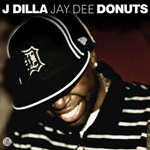 53. J Dilla
53. J Dilla
Donuts
[Stones Throw; 2006]
by Squeo
Jay Dee was a notoriously soft-spoken producer, quietly developing his style in the basement studio of his childhood home, waiting a full decade before stepping out as a solo artist, and even then mostly just using his voice as an extra layer of elastic percussion. So for his final work, Donuts, released just three days before his death, J Dilla decided to make a beat tape that no one could rap over. Brash, noisy, chopped to hell, and full of glaring “mistakes,” each of the 31 tracks on Donuts arrived as a self-contained universe of forward-moving sound that referenced everyone but answered to nobody. Undiscovered soul singers were pitch-shifted until pristine under the spotlight. Records that had been sampled to death in hip-hop for decades were flipped and tweaked just so until their cultural contexts disintegrated. Obnoxious sirens blared over his own songs like a pre-release watermark, yet were so perfectly placed that they almost instantly became the go-to sound effect for signifying (and honoring) Dilla after his passing. Taken as a whole (not easy!), Donuts is a masterpiece, a spiraling, psychedelic collage of appropriation that reasserts the postmodern origins of hip-hop as it breathes, laughs, cries, and sways with a humanity never before heard.
• J Dilla: http://www.stonesthrow.com/jdilla
• Stones Throw: http://www.stonesthrow.com
——
——
 52. Animal Collective
52. Animal Collective
Here Comes the Indian
[Paw Tracks; 2003]
by Ajitpaul Mangat
Here Comes the Indian was where the wild things were, a psychotic space where the boundaries between animal and man were at their most tenuous. Nature seemed at peace — insects sang, frogs leapt from the waters, pixie dust shimmered; (the beasts were hibernating); along came man, more child than grown-up, with cacophonous, indistinguishable voices, hoping to channel these melodies. The result: violent pathos. It was a bad trip, figuratively and literally. As such, Animal Collective got psychedelic folk just right. The expansion of consciousness balanced with introspection, the highs with the lows, and the screams with the sobs. “Hey Light” was an orgasm of joy scored to childish babblings. On “Panic,” melodies grasped for air and singing was repressed until eventually they were given room to breathe. Silence meanwhile became ominous among the screams on “Two Sails On A Sound.” Eventually, these corporal, organic musical stylings would become pop, the unfamiliar would become the uncanny, and the result would be evermore surreal and fantastic. But sophistication would have to wait. First, this collective had to come to terms with themselves, their instincts, their natures, their animal.
• Animal Collective: http://www.myanimalhome.net
• Paw Tracks: http://www.paw-tracks.com
——
——
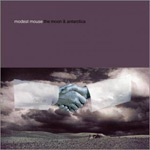 51. Modest Mouse
51. Modest Mouse
The Moon & Antarctica
[Epic; 2000]
by Joe Hemmerling
Modest Mouse’s major label debut displayed the same madcap eclecticism as their breakthrough, 1997’s The Lonesome Crowded West. This time, however, the pieces fit together more organically. Thunderous punk segued into expansive noise-pop and doubled back towards somber blue-grass so seamlessly that such pairings seemed not just fitting, but inevitable. Through Moon, the band worked the last traces of Built to Spill out of their system, and even the longer tracks relied more on atmospheric changes than guitar pyrotechnics. One faithful constant was Isaac Brock’s incisive wordplay, through which he displayed both cynicism and vulnerability in equal measure. Highlights are numerous. “Tiny Cities Made of Ashes,” with its careening disco beat, provided the blueprint for much of their later work, but the crowning gem was “3rd Planet.” The constantly evolving chord progressions combined with the electric/acoustic dynamics imbued the song with a spacious beauty, while the cyclical nature of its construction demonstrated Brock’s assertion that “The universe is shaped exactly like the earth/ If you go straight long enough, you end up where you were.” Moments like this made The Moon & Antarctica a high point in Modest Mouse’s catalogue and one of the first great albums of the decade.
• Modest Mouse: http://www.modestmousemusic.com
• Epic: http://www.epicrecords.com
——
——
 50. Björk
50. Björk
Vespertine
[Elektra; 2001]
by Joseph Hale
Vespertine was, if anything, even more candid than its predecessor, 1997’s Homogenic. Nowhere does Björk’s reputation for aloof obscurantism seem less fair; these songs were mostly very direct, withholding neither the banal, the carnal, nor the awkwardly mystagogical (but we can probably assume she’s being mundane when she muses on “the completion of [her] flesh”). Moreover, the music finally made good on its dubious “trip-hop” label, assembling psychedelic techno, chamber music, and chorale together into modal constructions that swelled and receded like emotions (or psylocibin). Not that this was some naif pose — which would be dishonest from a confirmed conceptualist like Björk — but the arty moves here were easy to understand. “Pagan Poetry,” for example, dramatized romantic anxieties with a cleverly bifurcated chorus that separated love-struck fervor from the inner preserve. The erotic commonplaces of “Cocoon” seemed self-consciously so, but their treatment was unambivalent — fitting. Mostly, though, Vespertine relied on the emotional qualities of musical scales, and if the melodies were often recessive, then the full-on manipulative film score treatment made the direct hits that much more unsparing. Homogenic may score higher on the pop quotient, but to date Vespertine is Björk’s finest union of aesthetic means and ends.
• Bjork: http://www.bjork.com
• Elektra: http://www.elektra.com
——
——
 49. Burning Star Core
49. Burning Star Core
The Very Heart of the World
[Thin Wrist; 2005]
by Paul Haney
The aughts saw a significant rise in exposure for the studious noise/avant underground, and while still a strident cult phenomena, the abundance of superb material and continual dedication has made for a healthier, more diverse landscape for experimental journey-folk. C. Spencer Yeh’s Burning Star Core caters to the underground’s diligent devotion to prolific output, making his project’s prodigious releases and variety of explorations difficult to quickly penetrate; The Very Heart Of The World, however, stood as a very convincing starting point for Yeh novices, and being the very first collection of works I had heard from BXC, it holds a very important place in my long journey into both Yeh’s discography and the greater avant-underground in general. Yeh’s string-driven monolith “Benjamin” opened the disc with a crash of automotive metal, thus proceeding to push forth the torrents of distorted violin monstrosity into all other facets of Yeh’s personality, from the absolutely deranged and ill-at-ease vocal/electronic mash-up of “Nyarlathotep” to the closing “Come Back Through Me,” where Yeh was joined by frequent BXC contributors Trevor Tremaine and Robert Beatty (both of Hair Police). The record displayed an incredibly assured and mature consistency that helps it stand, whether through intention or sheer coincidence, as a focal point in Yeh’s impressive catalog.
• Burning Star Core: http://www.dronedisco.com/bxc
• Thin Wrist: http://www.thinwrist.com
——
——
 48. Deerhunter
48. Deerhunter
Cryptograms
[Kranky; 2007]
by Kat Gardiner
Cryptograms wasn’t an album ahead of its time — it was above it. It floated in a foreign world, drifting through fog like a feverish thought. Deerhunter’s second album was recorded in two days. The first one, Bradford Cox had pneumonia. The second, the flu. Consequently, the album resonated with that out-of-body, half-zoned consciousness, like an ancient mystic portending things to come. Weird and fluid, I must admit that I didn’t know what to think when I first heard it. It took listening to releases that came after — from a smattering of mix tapes, virtual 7-inches, and Atlas Sound, to the angelic, epic, mistakenly-leaked, Microcastle — to make me go back and listen again. Harder. It was all there, like a seed that grew a tree. It was smaller, quieter, and surrounded by a dark, warm shell, but it was there. Cox once said that his nearly forgotten first album, Turn it Up, Faggot, was a “total failure” because it “comes out sounding like the era in which it was recorded, which is something that I really despise.” On Cryptograms, it didn’t sound like an era; it sounded like he was trying to create a new one.
• Deerhunter: http://www.kranky.net/artists/deerhunter.html
• Kranky: http://www.kranky.net
——
——
 47. Burial
47. Burial
Untrue
[Hyperdub; 2007]
by Doug Schrashun
With Untrue, not only did Burial create the most affecting instrumental dubstep record of the decade, but through his aggressive anonymity, he also served as a champion of sorts in a time when Twitter and TMZ have reduced the mystery quotient of modern music to nearly zero. His decision to hide his identity made perfect musical sense, as did the elusiveness of his second album, Untrue. That Burial cloaked the music’s emotional power with old vinyl crackle and disorientingly pitch-shifted vocals served to set the scene: the ecstasy of a grimy south London party only half-remembered. But it also lent the record a hand drawn quality that made listening to the album almost voyeuristic. The sense of longing and nostalgia was so vivid that the feeling was akin to having stumbled across a love letter you weren’t supposed to read. There were other urges at work, too — try to not sing along with “Archangel.” And despite the mangled lyrics and impossible shifts of pitch, there was a ghostly resonance throughout, a testament to Burial’s uncanny ability to create human emotion from the wreckage of technology.
• Burial: http://www.myspace.com/burialuk
• Hyperdub: http://www.hyperdub.net
——
——
 46. Sigur Rós
46. Sigur Rós
Ágætis Byrjun
[FatCat; 2001]
by Brom
Visitors to Iceland will find a majestic landscape filled with geologically active volcanoes and erupting geysers. Spectacular glaciers cover the interior of the island with pretty fjords punctuating the coastline. One can also see Dettifoss, Europe’s most powerful waterfall, and the rift between the European and North American tectonic plates at Þingvellir National Park, with cracks and canyons marking the surface. And then there is Sigur Rós. Listeners to Ágætis byrjun discovered an album teeming with awesome eruptions of sound, as a cello-bowed guitar swept over “Svefn-g-englar” while the drums and trumpets cascaded on “Ný batterí.” Ambient noise hollowed itself out on “Hjartað hamast (bamm bamm bamm),” while Jónsi Birgisson’s voice swam magnificently amongst the lush orchestration. And what about that voice, its smooth dovetailing with the violins on “Starálfur” and glacial pitch on “Olsen Olsen.” Sigur Rós’ frontman wove his instrument across the record like how the volcanoes, mountains, geysers, and canyons meander across his homeland. Never has an album made me fall in love with a country before even setting eyes on it.
• Sigur Rós: http://www.sigur-ros.co.uk
• FatCat: http://fat-cat.co.uk/fatcat
——
——
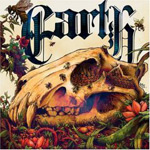 45. Earth
45. Earth
The Bees Made Honey In The Lion’s Skull
[Southern Lord; 2008]
by Elliott Sharp
Establishing themselves as the overlords of brain-shaking drone with Earth 2, Earth returned in 2005 with HEX: Or Printing In The Infern, an album that didn’t destroy their former aesthetic as much as it reconstructed it and, from our historical vantage point, summoned its brilliantly logical progression. However, this new sound, which substituted Americana flourishes for one-chord doom-sludge and gospel uplift for depressive wall-gazing, only reached its glorious summit on The Bees Made Honey In The Lion’s Skull. On first listen, one was pulverized by the seemingly minimal landscape, like a Cormac McCarthy character who looks out over the Western desert with red eyes full of sweat and dread. But once you were more accustomed to the surroundings, having accepted the incessant heat and doom, the landscape came alive, showing bright signs of life and eternal blossoming. It was more about renewal than decay, though the constant reminder of the evil that might lurk behind the next jagged cliff darkly loomed in the background. The Bees Made Honey asked us to look upon a world scarred by death and nihilism with attentive eyes, ones that could see the possibility of new life while simultaneously remaining suspicious of optimism’s false promises: a critical lesson to walk away from the decade with.
• Earth: http://www.thronesanddominions.com
• Southern Lord: http://www.southernlord.com
——
——
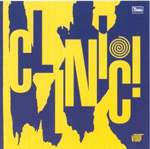 44. Clinic
44. Clinic
Internal Wrangler
[Domino; 2000]
by Tamec
While Internal Wrangler wasn’t Clinic’s first mission statement (Domino released a compilation of the band’s first three singles in 1999), it remains, four albums and nine years later, the band’s definitive work. A blend of familiar elements — garage rock, surf, and ? and the Mysterians-style organ hijinks — that somehow sounded completely original, Internal Wrangler included the best examples of each facet of Clinic’s sound. Throughout, Ade Blackburn’s reedy, indistinct voice kept things firmly in Weirdsville, and the abutting cuts of unadulterated garage stomp and twinkling, slightly skewed bedroom pop kept the record and band from being pigeonholed. The record’s first side may have been one the greatest of the decade: the eerie, bongo-driven opening salvo “Voodoo Wop” led into the one-two punch of a pair of the band’s best rock songs, “The Return of Evil Bill” and “Internal Wrangler.” But it was the nonsense head-bobber “The Second Line” and, later, the achingly pretty “Distortions” that were Internal Wrangler’s high points. By the time “2/4” and the lovely, haunting “Goodnight Georgie” rolled around, we started to comprehend better what the band was doing, but the songs were no less exciting for it. While the band has mined the same sound on their subsequent albums, Internal Wrangler is marked by a quality they’ve failed to duplicate — making the album a riddle even to the band themselves.
• Clinic: http://www.clinicvoot.org
• Domino: http://dominorecordco.us
——
——
 43. Justice
43. Justice
†
[Ed Banger; 2007]
by Keith Kawaii
Something changed after † dropped. A lot of critics initially noted the French duo’s similarities to Daft Punk and Michael Jackson, almost to the point of branding the album a ripoff. But that’s all fallen by the wayside, hasn’t it? Since its release, † has morphed into somewhat of a milestone for dance music. What once sounded derivative suddenly seemed like a brilliant summation of an entire genre’s best offerings. Supremely confident of where dance music had come from, what it did right, and where it needed to go, Justice neatly screwed the lid on French House music, throwing down a front-to-back classic album. Their focus on detail, composition, and flow made more than a few producers and DJs seem downright lazy. It suddenly wasn’t good enough to put a club beat and synths over a hazy sample — not unless the end results were as effortless and mesmerizing as “D.A.N.C.E.” or “Stress.” These tracks were real compositions with impeccable dynamics and arrangements; the samples were just another musical tool. From heavy metal to intense, gothic slap bass, the album somehow managed to crystallize these seemingly disparate genres into the sound of modern house music. Dance acts almost have no choice now: they either willfully ignore Justice’s mark or try their hardest to top it. Nobody has.
• Justice: http://www.myspace.com/etjusticepourtous
• Ed Banger: http://www.edbangerrecords.com
——
——
 42. Jim O’Rourke
42. Jim O’Rourke
Insignificance
[Drag City; 2001]
by Jspicer
The string of Jim O’Rourke ‘pop’ albums that led to Insignificance never prepared us for the morsels of contempt and misanthropy that would dot his turn-of-the-century release. O’Rourke, chin high, casted stones with such lyrical vitriol that most were shocked by its forthrightness. Beyond these sticks and stones — the wishes of blindness/deafness/dumbness, the pissing on childish memories — it was difficult to stay mad at O’Rourke as he channeled the talents of Van Dyke Parks and Phil Spector. While we were sternly told ‘It’s not me, it’s you’ from the lips of O’Rourke, his music was telling it to us softly and sweetly, breaking it off with the listener in the middle of gentle coitus. “All Downhill from Here” gave us the brush-off as O’Rourke claimed he’d rather sink his own ship rather than be anchored to ours. In spite of its angry, halting guitars, “Therefore, I Am” found O’Rourke making up excuses for the vicious breakup — everyone has second thoughts, though O’Rourke talked himself out of reconciliation by the end of “Memory Lame.” The end was amicable thanks to “Life Goes Off,” though the rapid-fire white noise will be the rumor that ruins our future happiness when it comes back around. Jim O’Rourke — such a deceptive devil.
• Jim O’Rourke: http://tisue.net/orourke
• Drag City: http://www.dragcity.com
——
——
 41. Dirty Projectors
41. Dirty Projectors
The Getty Address
[Western Vinyl; 2005]
by Benjamin Bernstein
An obtuse cobbling of sounds recorded at many different times and in many different places, The Getty Address was a milestone for the partnership between computers and composers in creative independent music. Dave Longstreth’s dense but decipherable narrative about Don Henley provided conceptual cohesion, while the creative percussion on almost every track underscored it. Especially impressive were tracks like “Jolly Jolly Jolly Ego,” a jam filled with minimalist glitches and an R&B swagger not unlike the band’s later hit, “Stillness Is The Move.” “Tour Along The Potomac” also fell into the same category, with its Clipse-on-hallucinogens back beat, while “Gilt Gold Scabs” proved that operatic strings and vocals could actually groove really hard. Beyond the finished compositions themselves, most impressive was the way that the processing, the panning, the glitches, and the cuts became part of the music; they were like instruments themselves, not just aesthetic flourishes. While Longstreth’s process of composition — editing together without specific songs in mind — necessitated this effect to some degree, it would be hard to find another album with such a rare balance of musical intuition and post-production.
• Dirty Projectors: http://www.dirtyprojectors.net
• Western Vinyl: http://westernvinyl.com
——
——
